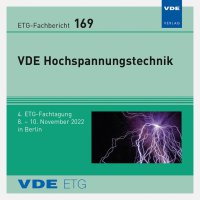Breakdown Strength and Dielectric Properties of Fused Filament Fabricated 3D-Printed Dielectrics
Conference: VDE Hochspannungstechnik - 4. ETG-Fachtagung
11/08/2022 - 11/10/2022 at Berlin, Germany
Proceedings: ETG-Fb. 169: VDE Hochspannungstechnik 2022
Pages: 7Language: englishTyp: PDF
Authors:
Schmid, Andre; Wurm, Philipp; Humpert, Christof (Laboratory of High Voltage Engineering, Institute of Electrical Power Engineering, TH Köln (University of Applied Sciences), Cologne, Germany)
Abstract:
Additive 3D printing processes have already been successfully introduced in many sectors. For use in energy technologies it is necessary to examine the electrical and dielectric properties of printed materials in order to be able to evaluate their suitability. First, the dielectric breakdown strength provides information about the insulation capacity of a material and opens up the fundamental design of equipment. In addition, the relative permittivity and the dissipation factor are also key criteria to design an electrical insulating system. Therefore, these are measured in air over a frequency range from 100 muHz to 5 kHz. The results of the dielectric breakdown strength of the materials with a thickness of 0.3 mm are in the range of 30 to 70 kV/mm. PLA achieves the lowest strength value with 32 kV/mm, ABS the highest value with 67 kV/mm. Furthermore, the dielectric breakdown strength of ABS was investigated for two additional thicknesses to examine the thickness effect. The dielectric breakdown strength was reduced from 82 kV/mm at 0.12 mm to 56 kV/mm at 0.5 mm. The results of the permittivity measurements show an almost constant behaviour over the frequency range. PA66 reaches the maximum value of 4.65. The lowest maximum value is achieved by PLA at 100 muHz with 2.07. The dissipation factor follows a similar pattern as the permittivity, but the increase at low frequencies is much more pronounced. The highest value of 19 % is again attributable to PA66. The lowest value at a frequency of 100 muHz is achieved by PLA with 1.4 %.


